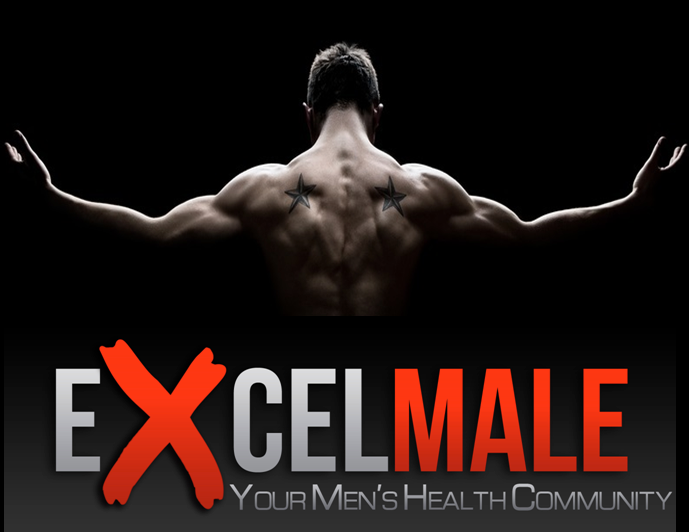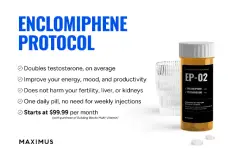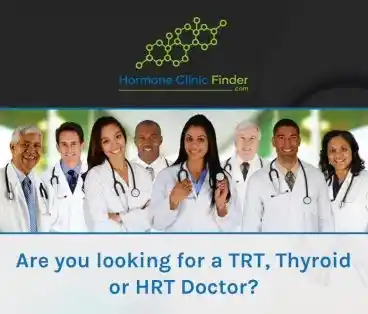As usual Nelson's Excel is where it's at!
Mohit Khera, MD, MBA, MPH, Professor of Urology, F Brantley Scott Chair in Urology, Medical Director of the Laboratory for Andrology Research, Medical Director for the Scott Department of Urology Baylor College of Medicine.

Good morning, and thank you once again for this incredible opportunity. I want to take a moment to sincerely thank all of you for your amazing hospitality over the past three days. It’s been a true honor to meet the faculty, spend time with the residents over lunch and dinner, and even visit the art museum—thank you for taking the time. It’s been an absolute pleasure.
Today, I want to talk about something I’m very passionate about. When I started my career, my mentor gave me one piece of advice: “Pick one thing and focus on it.” I chose testosterone. For the past 17 years, I’ve dedicated my time to reading, writing, and researching testosterone. I’d like to take you on that journey and share with you the controversies surrounding testosterone replacement therapy (TRT) that have emerged over the past 15 years.
I was part of the steering committee for the TRAVERSE trial, the largest randomized, placebo-controlled trial ever conducted on testosterone. Our final publication was released in January of this year, and I’ll be covering those findings today.
If you treat men with testosterone, you must be aware of these five key controversies:
Testosterone was first synthesized in 1935, along with oral testosterone (methylated to survive liver metabolism). Unfortunately, this form was associated with hepatotoxicity and even liver cancer. For decades, oral testosterone was avoided due to these risks.
In the 1970s, testosterone undecanoate emerged. It bypassed the liver and entered the lymphatic system, avoiding liver toxicity. However, it required 3–4 doses per day with a high-fat meal, which made compliance difficult. Though it was available globally under the brand name Andriol, the FDA never approved it in the U.S.
In 2019, the U.S. finally approved Jatenzo, a new oral testosterone formulation. It requires only twice-daily dosing with any meal (not necessarily fatty) and provides a favorable PK profile that mimics natural diurnal variation.
Oral testosterone has a lower risk of erythrocytosis (5%) compared to injectables (66%), pellets (35%), and gels (12%). It causes a modest 5 mmHg rise in systolic blood pressure—a common effect across all testosterone products due to sodium retention.
Three oral testosterone options are currently available in the U.S.:
All require a meal but not a fatty meal. Coverage varies, so affordability often drives choice.
The FDA indications for testosterone replacement remain narrow—primarily for primary and secondary hypogonadism due to specific medical causes. In 2015, the FDA explicitly excluded "age-related hypogonadism", leading to 85% of clinical TRT use being off-label.
Despite FDA restrictions, clinical guidelines (AUA, Endocrine Society) support TRT for men with:
TRT is not first-line treatment for ED, but it can enhance response to PDE5 inhibitors in hypogonadal men. Studies show 30–50% of non-responders to PDE5 inhibitors will become responders when testosterone is normalized.
In 2006, most clinicians feared testosterone would cause prostate cancer. That belief has shifted dramatically.
Numerous studies since 2003—including those by Morgentaler—have shown no increased risk of cancer recurrence in men receiving TRT after:
In fact, emerging research, including our 2013 study, suggests that testosterone may even reduce biochemical recurrence rates in high-risk patients.
Lab and animal models show an “inverted U” effect, where very low or very high testosterone levels suppress prostate cancer growth, but mid-range (hypogonadal) levels promote it. This supports the idea that low testosterone is a dangerous state for prostate cancer.
Testosterone may be useful in:
Studies suggest low testosterone is associated with worse pathology, greater progression on active surveillance, and higher recurrence rates.
In fact, testosterone outperforms some expensive genomic assays in predicting unfavorable disease—with a cost of only $39.
BAT involves cycling between high and low testosterone levels in men with metastatic, castration-resistant prostate cancer (CRPC).
This was once unthinkable—giving testosterone to men with advanced prostate cancer—but it is now a growing area of research.
The TRAVERSE Trial (2018–2022) included over 5,200 men at high cardiovascular risk.
Exogenous testosterone shuts down LH/FSH, leading to azoospermia. Recovery is possible, but not guaranteed, and baseline fertility may not return.
Thank you all for your attention and for giving me the opportunity to share this important and evolving story of testosterone therapy.
Mohit Khera, MD, MBA, MPH, Professor of Urology, F Brantley Scott Chair in Urology, Medical Director of the Laboratory for Andrology Research, Medical Director for the Scott Department of Urology Baylor College of Medicine.
Good morning, and thank you once again for this incredible opportunity. I want to take a moment to sincerely thank all of you for your amazing hospitality over the past three days. It’s been a true honor to meet the faculty, spend time with the residents over lunch and dinner, and even visit the art museum—thank you for taking the time. It’s been an absolute pleasure.
The Testosterone Journey: 17 Years of Focus
Today, I want to talk about something I’m very passionate about. When I started my career, my mentor gave me one piece of advice: “Pick one thing and focus on it.” I chose testosterone. For the past 17 years, I’ve dedicated my time to reading, writing, and researching testosterone. I’d like to take you on that journey and share with you the controversies surrounding testosterone replacement therapy (TRT) that have emerged over the past 15 years.
Disclosures
I was part of the steering committee for the TRAVERSE trial, the largest randomized, placebo-controlled trial ever conducted on testosterone. Our final publication was released in January of this year, and I’ll be covering those findings today.
Five Major Controversies in Testosterone Therapy
If you treat men with testosterone, you must be aware of these five key controversies:
- Oral testosterone: Evolution, efficacy, and safety
- Indications for testosterone replacement therapy
- Testosterone and the prostate: Cancer and BPH
- Testosterone and cardiovascular risk
- Testosterone and fertility
1. Oral Testosterone: From 1935 to Today
Early Oral Testosterone and Liver Toxicity
Testosterone was first synthesized in 1935, along with oral testosterone (methylated to survive liver metabolism). Unfortunately, this form was associated with hepatotoxicity and even liver cancer. For decades, oral testosterone was avoided due to these risks.
The Game Changer: Testosterone Undecanoate
In the 1970s, testosterone undecanoate emerged. It bypassed the liver and entered the lymphatic system, avoiding liver toxicity. However, it required 3–4 doses per day with a high-fat meal, which made compliance difficult. Though it was available globally under the brand name Andriol, the FDA never approved it in the U.S.
U.S. Breakthrough: Jatenzo (2019)
In 2019, the U.S. finally approved Jatenzo, a new oral testosterone formulation. It requires only twice-daily dosing with any meal (not necessarily fatty) and provides a favorable PK profile that mimics natural diurnal variation.
Erythrocytosis and Blood Pressure Considerations
Oral testosterone has a lower risk of erythrocytosis (5%) compared to injectables (66%), pellets (35%), and gels (12%). It causes a modest 5 mmHg rise in systolic blood pressure—a common effect across all testosterone products due to sodium retention.
Insurance and Product Comparison
Three oral testosterone options are currently available in the U.S.:
- Jatenzo (pharmacy-based, titratable)
- Kyzatrex (cash-based, $150/month, no pharmacy)
- Tlando (fixed dose, no titration)
All require a meal but not a fatty meal. Coverage varies, so affordability often drives choice.
2. Indications for Testosterone Therapy
Regulatory vs. Clinical Practice
The FDA indications for testosterone replacement remain narrow—primarily for primary and secondary hypogonadism due to specific medical causes. In 2015, the FDA explicitly excluded "age-related hypogonadism", leading to 85% of clinical TRT use being off-label.
Guidelines Say Otherwise
Despite FDA restrictions, clinical guidelines (AUA, Endocrine Society) support TRT for men with:
- Two low testosterone readings
- Symptoms of hypogonadism, like low libido, fatigue, or erectile dysfunction (ED)
TRT in Erectile Dysfunction
TRT is not first-line treatment for ED, but it can enhance response to PDE5 inhibitors in hypogonadal men. Studies show 30–50% of non-responders to PDE5 inhibitors will become responders when testosterone is normalized.
3. Testosterone and the Prostate
Historical Fear of Prostate Cancer
In 2006, most clinicians feared testosterone would cause prostate cancer. That belief has shifted dramatically.
The Paradigm Shift: Safety and Therapeutic Potential
Numerous studies since 2003—including those by Morgentaler—have shown no increased risk of cancer recurrence in men receiving TRT after:
- Radical prostatectomy
- Radiation therapy
- Brachytherapy
- Even active surveillance
In fact, emerging research, including our 2013 study, suggests that testosterone may even reduce biochemical recurrence rates in high-risk patients.
Biological Rationale: The Inverted U
Lab and animal models show an “inverted U” effect, where very low or very high testosterone levels suppress prostate cancer growth, but mid-range (hypogonadal) levels promote it. This supports the idea that low testosterone is a dangerous state for prostate cancer.
4. Testosterone as a Biomarker in Prostate Cancer
Testosterone may be useful in:
- Predicting cancer presence (especially <250 ng/dL)
- Assessing eligibility for active surveillance
- Forecasting recurrence after prostatectomy
Studies suggest low testosterone is associated with worse pathology, greater progression on active surveillance, and higher recurrence rates.
In fact, testosterone outperforms some expensive genomic assays in predicting unfavorable disease—with a cost of only $39.
5. Bipolar Androgen Therapy (BAT)
BAT involves cycling between high and low testosterone levels in men with metastatic, castration-resistant prostate cancer (CRPC).
Transformer Study
- Compared BAT vs. enzalutamide
- Found no difference in survival
- Found better quality of life with BAT
- When BAT was followed by enzalutamide, survival improved further
This was once unthinkable—giving testosterone to men with advanced prostate cancer—but it is now a growing area of research.
Cardiovascular Risk and the TRAVERSE Trial
The TRAVERSE Trial (2018–2022) included over 5,200 men at high cardiovascular risk.
Key Findings:
- No increased risk of heart attack, stroke, or CV death (7% in both groups)
- No increase in venous thromboembolism
- Minor (non-significant) rise in atrial fibrillation and acute kidney injury (1%)
- No increased risk in high-grade prostate cancer, BPH, or lower urinary tract symptoms
Benefits Found:
- Improved sexual activity and libido
- Improved depression scores
- Improved anemia
- No improvement in ED, diabetes, or bone fractures (unexpected increase in early fractures)
Testosterone and Fertility
TRT Causes Infertility
Exogenous testosterone shuts down LH/FSH, leading to azoospermia. Recovery is possible, but not guaranteed, and baseline fertility may not return.
Alternatives for Hypogonadal Men Wishing to Conceive:
- HCG: Preserves intratesticular testosterone and spermatogenesis
- SERMs (Clomid/Enclomiphene): Stimulate endogenous testosterone
- Enclomiphene has fewer side effects and better mood/libido response
- Intranasal/Nasal TRT or Oral Forms: May cause less suppression of sperm production (still under study)
Summary Takeaways
Risks
- No increase in CV events
- No increase in prostate cancer or BPH
- Slight increase in early bone fractures
- Minor rise in AFib/AKI (not statistically significant)
Benefits
- Improved libido and mood
- Improved anemia
- Better sexual activity, but no improvement in ED as monotherapy
- No benefit in diabetes or bone health
Final Words on Fertility
- Avoid TRT in men actively trying to conceive
- Use HCG, SERMs, or alternatives to preserve fertility
Thank you all for your attention and for giving me the opportunity to share this important and evolving story of testosterone therapy.
Last edited by a moderator:
















